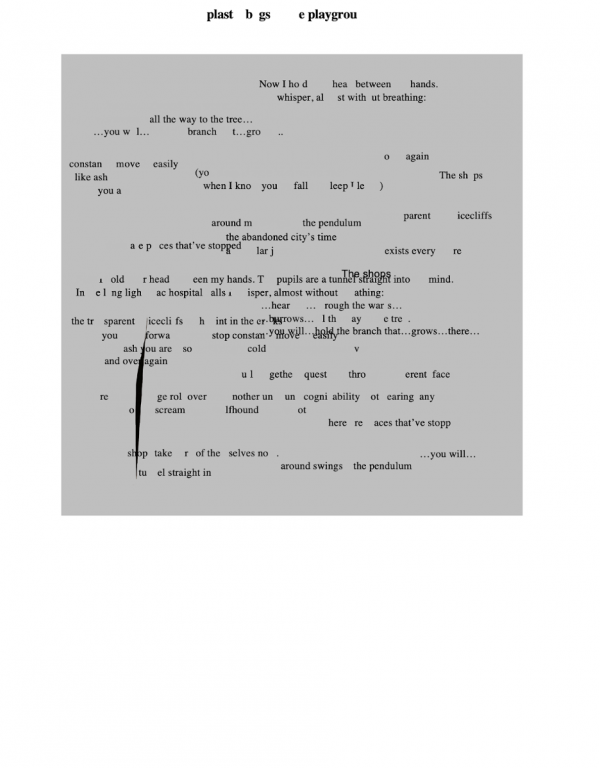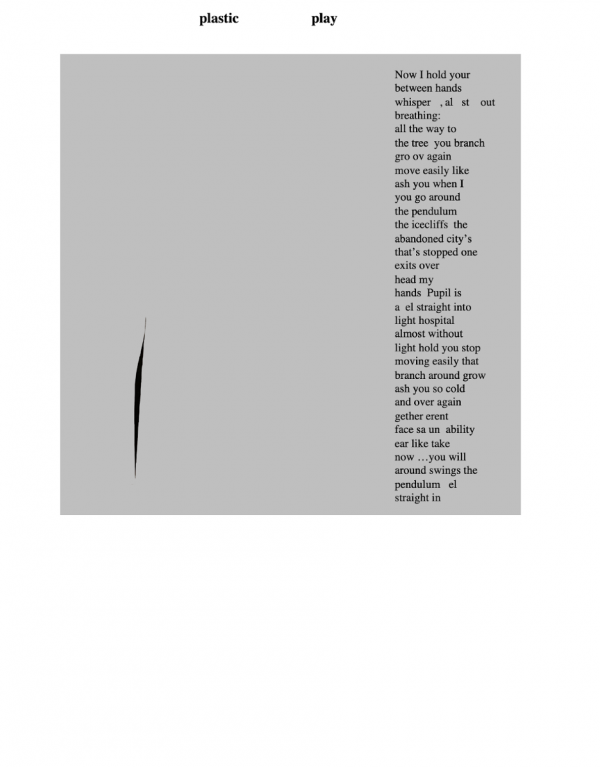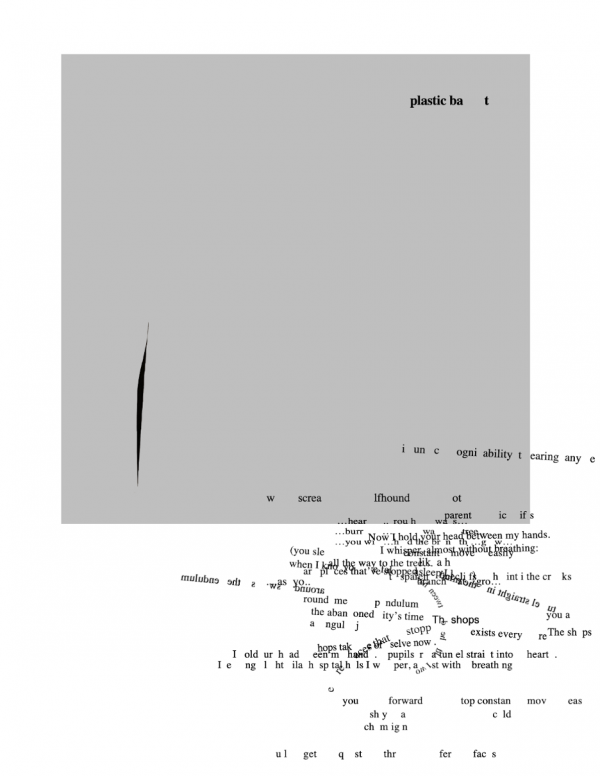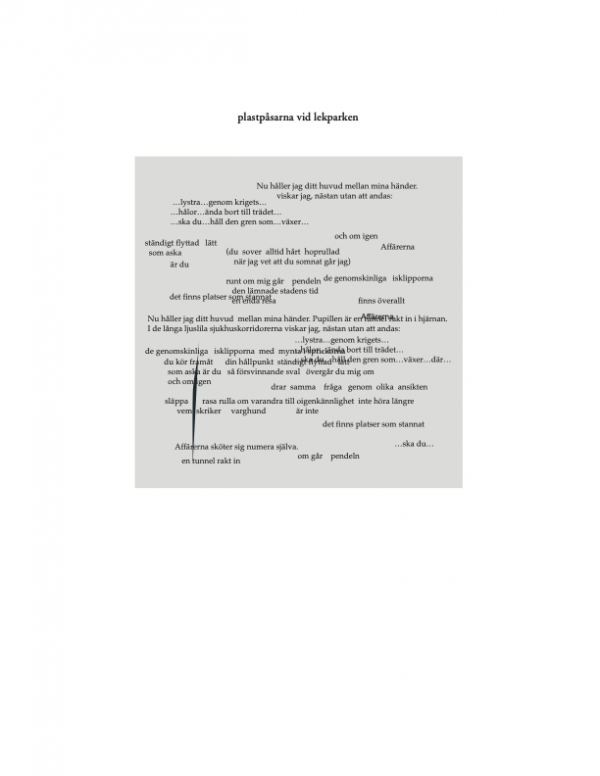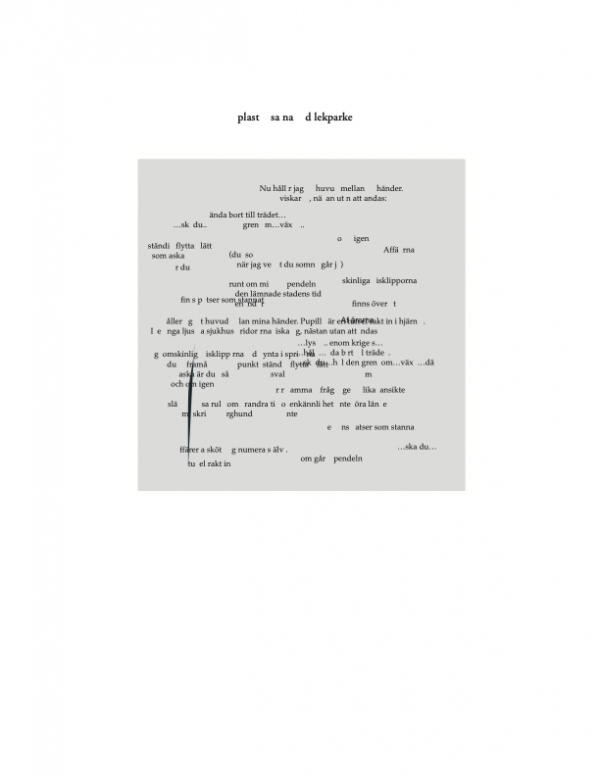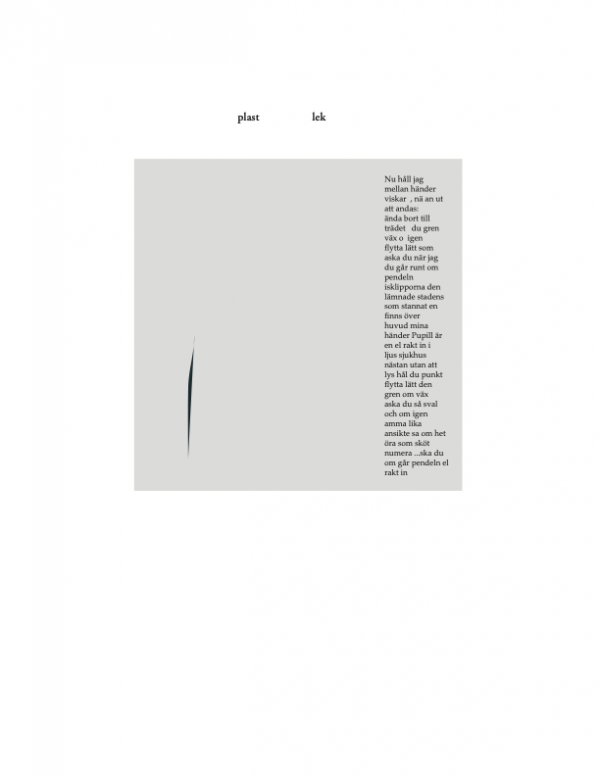Translator's Note
While a major theme of Anna Hallberg’s poetry has been to attend to the poetics of materiality (for example, the first third of her 2010 collection Colosseum, Kolosseum could be read as a material poetics of shit), the poem “Plastic Bags at the Playground” (“Plastpåsarna vid lekparken”) from her second collection On Your Marks (På era platser, 2004) brings the poem as a material object to the fore in a way that I’ve never seen before. Over the course of five pages, the poem is composed, re-composed, and de-composed, with its visuality taking center stage. In doing so, the poem blurs the boundaries between literature and visual art, even forcing the question of “(how) is this really a poem?” In a way, the poem (and Hallberg’s poetry in general) gestures towards and brings to mind the work of Susan Howe (indeed, Hallberg has been associated with a Swedish parallel to American Language Poetry—“språkmaterialism,” language materialism), but in contrast to Howe’s “collage poems,” Hallberg’s poem composes decomposition. The only static elements are the grey page-within-the-page and the tear in that page—perhaps hinting at the inherent violence of language, an original rend remaining after language goes extinct. On the other hand, the title of the poem recalls the American eco-critic Timothy Morton’s notion of hyperobject, entities that have a such a vast temporal and spatial dimension that they defeat traditional ideas about what a thing “is” in the first place. In this case, plastic and even language itself. If the act of reading a poem, or indeed the poem itself, is a temporally bound event, then Hallberg’s poem can be read as ecopoetically mimicking the non-breakdown of plastic via the breakdown, decomposition, re-composition, and reorganization of the language of the poem.
For the translator, however, it presents another, exciting challenge. If poetry translation is more often fungal than not (I believe it is), then to deconstruct and reconstruct a poem that also constructs, re-constructs, and de(con)structs itself truly becomes an experiment. Because this poem is so strongly inflected with its materiality and (secondary?) function as an object of visual art, I translated it several times with as many methods. After handwriting out a first draft translation of each page, I then typed all the words into Word in order to print them out and arrange them, like a collage, like a primary school art project. I wasn’t planning to take a photo of these pages and call it the finished project, but I thought it was necessary to work “hands-on” (literally) with the words of the poem. The point of this draft/exercise was to get tangible feel for the poem—I also wanted to stab the pages with a knife (for the art, of course). This is when I realized how challenging it was going to be to recreate this material work digitally on my computer. Since I’m not particularly tech savvy, I ended up composing the translation in PowerPoint, which required a great deal of finicking and finessing to get the poem to visually approximate the Swedish version.
If translation is a form of constrained writing, what does that say about the elements of that writing that are non-linguistic? In other words, how do we “translate” visuality? It is not sketched study-turned-painting nor is it a copy. What about the practical aspect of publishing the poem, whether online or in print? The poem’s visual nature demands it to be treated as an image, a JPEG, because it cannot be typed into a program or entered into Wordpress without literally being lost, not just in translation. The poem is both philosophically interesting and practically challenging, both in its original form and in the translation process. It’s thus also given me one of my most exciting translation projects.
×

